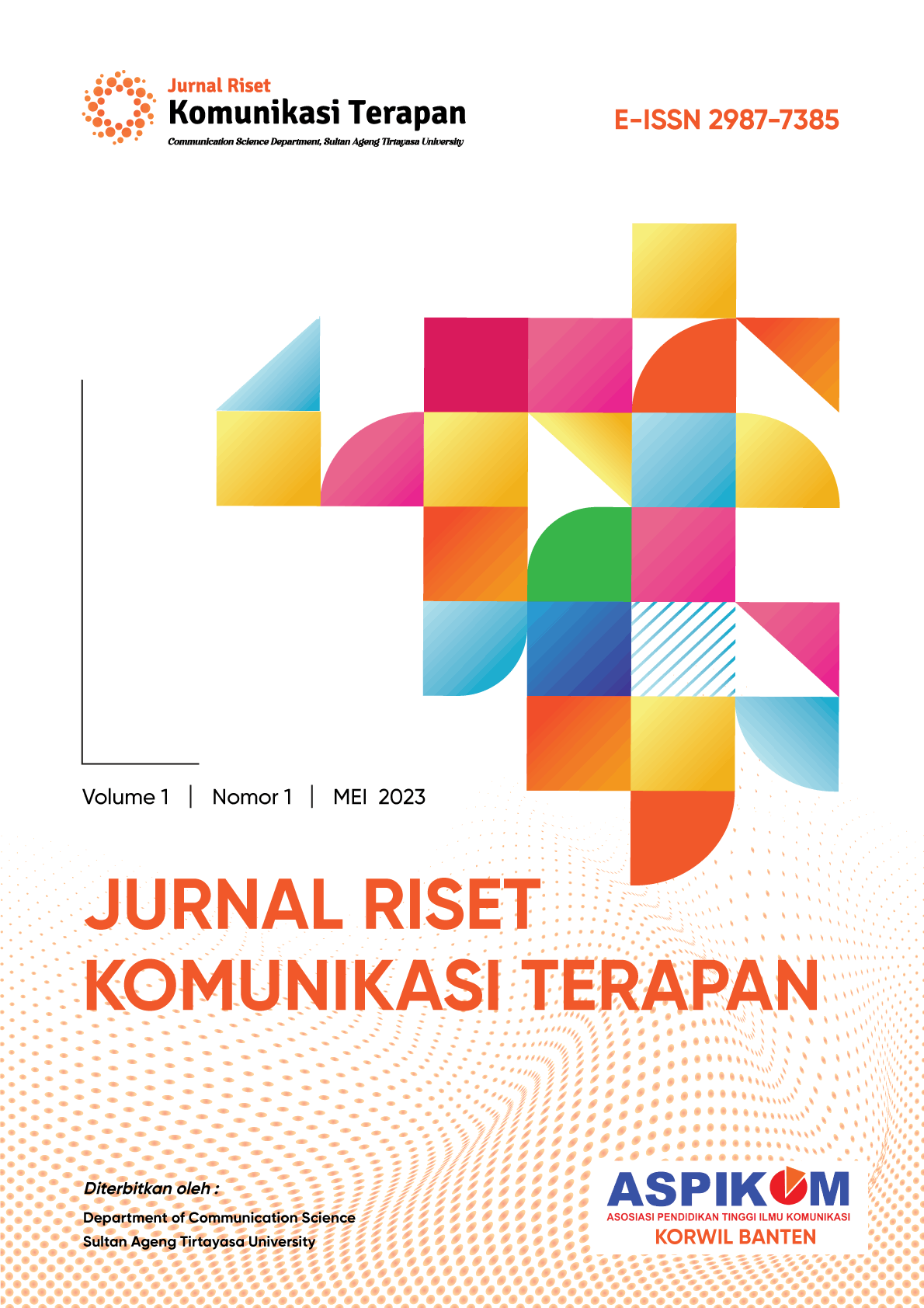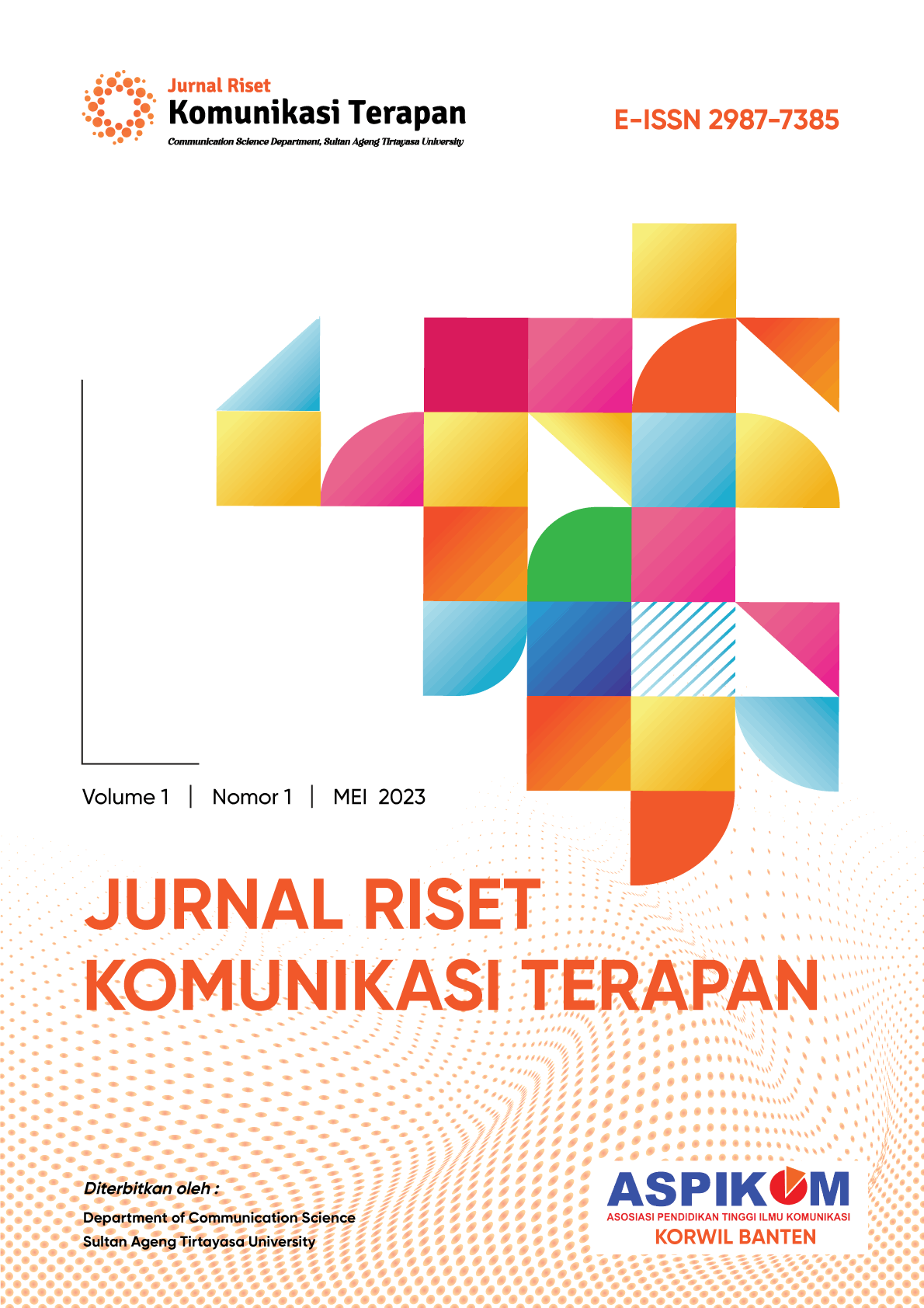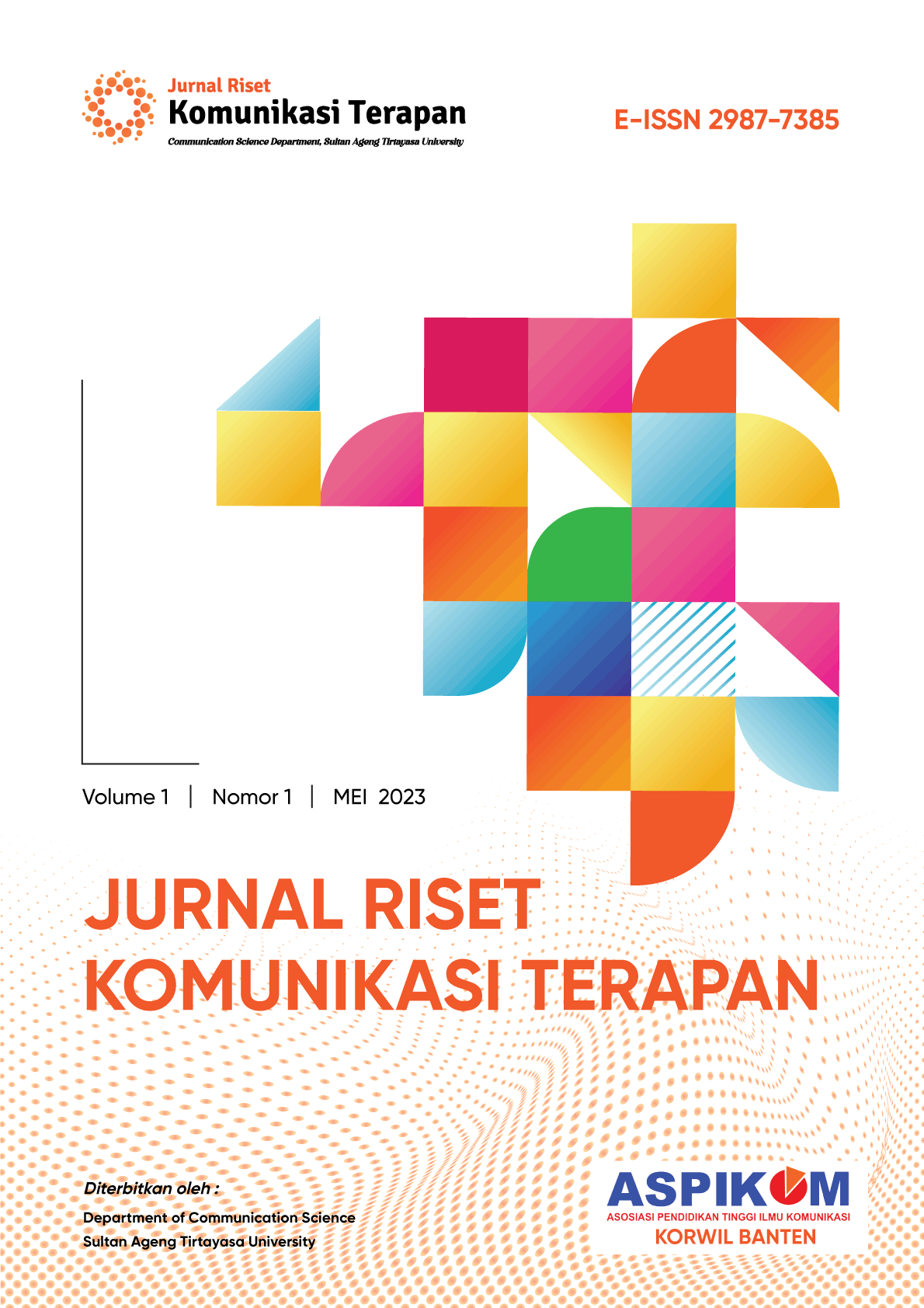POLITICAL BRANDING PASANGAN CALON PRESIDEN MELALUI TIKTOK PADA KAMPANYE PEMILU 2024
Abstract
In a political contestation, the candidates take part in branding to build an image in the eyes of the public, which is called political branding. Tiktok social media is used by presidential and vice presidential candidates in the 2024 elections to build political branding. This study aims to determine aspects of personality, appearance, and political messages on the accounts of the 2024 Election candidates represented in icons, indexes, and symbols. This research uses a qualitative approach, with Charles Sanders Peirce's semiotic analysis technique that examines icons, indices, and symbols. Political Branding is examined by looking at indicators from Mitsikopolou's (2008) theory which includes personality, appearance, and political messages. The research uses symbolic interaction theory to discuss findings related to communication symbols in campaigns on Tiktok Social Media. The object of this research is the Tiktok accounts @aniesbaswedan, @amuhaiminiskandar, @partaigerindra, @gibran_rakabuming, @ganjarpranowo, and @mohmahfudmdofficial. The unit of analysis is the upload of the candidates' campaign content on Tiktok from January 10 to February 10, 2024. Each candidate account selected 5 contents that have political branding elements. The results of this study show that each candidate displays various aspects of personality to be memorable in the minds and minds of the public, but almost all candidates emphasize the element of connection with the community. In the appearance aspect, the candidates show political branding symbols from the clothes they wear. From the aspect of political messages, the candidates' personal branding is shown in the form of communication and interaction with the community during the campaign.
Full Text:
69-84 PDF (Indonesian)References
Agung, S. W. (2013). Strategi Public Relations. Gramedia Pustaka Utama.
Agung Wasesa, S. (2011). Political Branding & Public Relations. Gramedia Pustaka Utama.
Ayu, A. N. (2019). Penampilan Sebagai Komunikasi Non-Verbal Perempuan dalam Dunia Pekerjaan. Skripsi : Universitas Sultan Ageng Tirtayasa.
Aziz, R. A. (2020). Kiai dan Politik Elektoral. Yogyakarta: ETD UGM
Banurea, I. S., & Maulina, P. (2022). Political Branding Edy Rahmayadi pada Kampanye Pilgub Sumatera Utara Tahun 2018 melalui Instagram. JIKA Jurnal Ilmu Komunikasi Andalan, 5(2), 115–137.
Blumer, Herbert. 1969. Symbolic Interactionsm: Perspective and Method. Inggris: Prentice Hall.
Deriyanto, D., Qorib, F., Komunikasi, J. I., Tribhuwana, U., & Malang, T. (2018). Persepsi Mahasiswa Universitas Tribhuwana Tunggadewi Malang Terhadap Penggunaan Aplikasi TikTok. In JISIP, 7(2). www.publikasi.unitri.ac.id
Fitri, N. A. (2022). Political Branding Arief Rohman dalam Menyukseskan Kampanye Pilkada 2020 di Media Sosial. JPW (Jurnal Politik Walisongo) –, 4(2), 1–18.
Gilar Ramdhani. (2023). Pemilu TKN Nilai Gibran Mampu Tunjukkan Dirinya Sebagai Pemimpin Muda yang Berkompeten. Liputan6. https://www.liputan6.com/pemilu/read/5488979/tkn-nilai-gibran-mampu-tunjukkan-dirinya-sebagai-pemimpin-muda-yang-berkompeten?page=2
Lieb, K. J., & Shah, D. V. (2010). Consumer culture theory, nonverbal communication, and contemporary politics: Considering context and embracing complexity. Journal of Nonverbal Behavior, 34(2), 127–136. https://doi.org/10.1007/s10919-010-0085-y
Mitsikopoulou, B. (2008). The Branding of Political Entities as Discursive Practice. Journal of Language and Politics, 7(3), 353–371. https://doi.org/10.1075/jlp.7.3.01mit
Prasetyo, B. D., & Febriani, N. S. (2020). Strategi Branding: Teori dan Perspektif Komunikasi dalam Bisnis. Universitas Brawijaya Press.
Refbacks
- There are currently no refbacks.

 ONLINE SUBMISSION
ONLINE SUBMISSION FOCUS AND SCOPE
FOCUS AND SCOPE AUTHOR GUIDELINES
AUTHOR GUIDELINES PEER REVIEW PROCESS
PEER REVIEW PROCESS DOWNLOAD TEMPLATE
DOWNLOAD TEMPLATE OPEN ACCESS POLICY
OPEN ACCESS POLICY PUBLICATION ETHIC
PUBLICATION ETHIC COPYRIGHT NOTICE
COPYRIGHT NOTICE PUBLICATION FEE
PUBLICATION FEE JOURNAL CONTACT
JOURNAL CONTACT JOURNAL HISTORY
JOURNAL HISTORY








